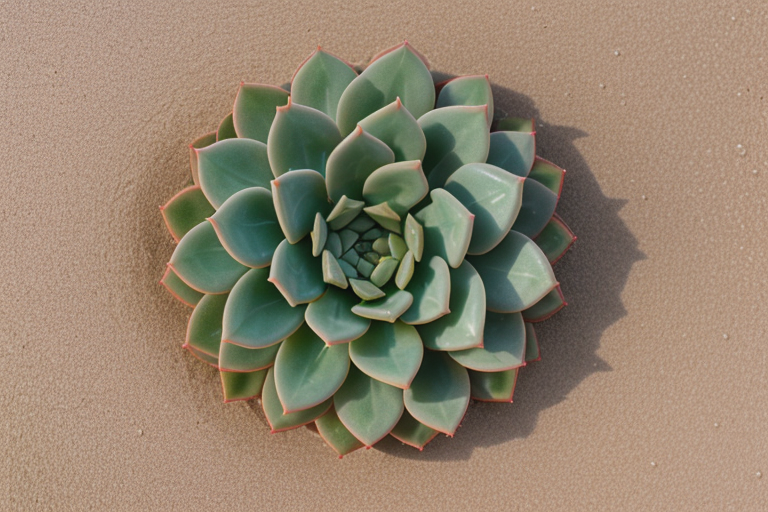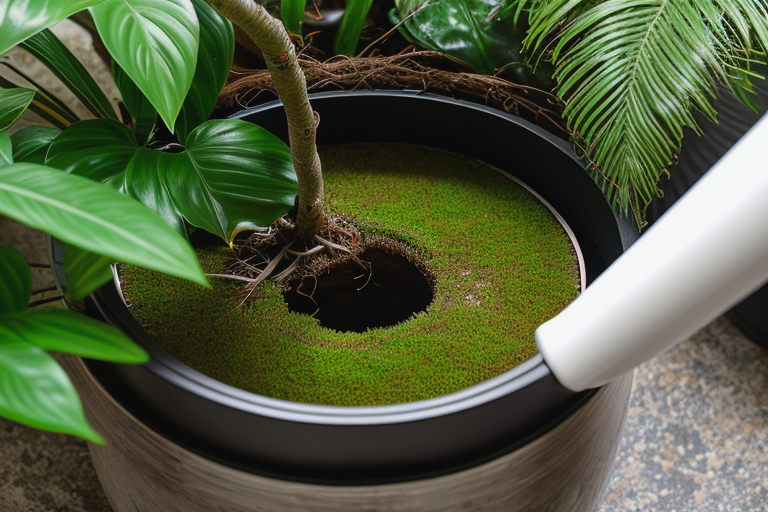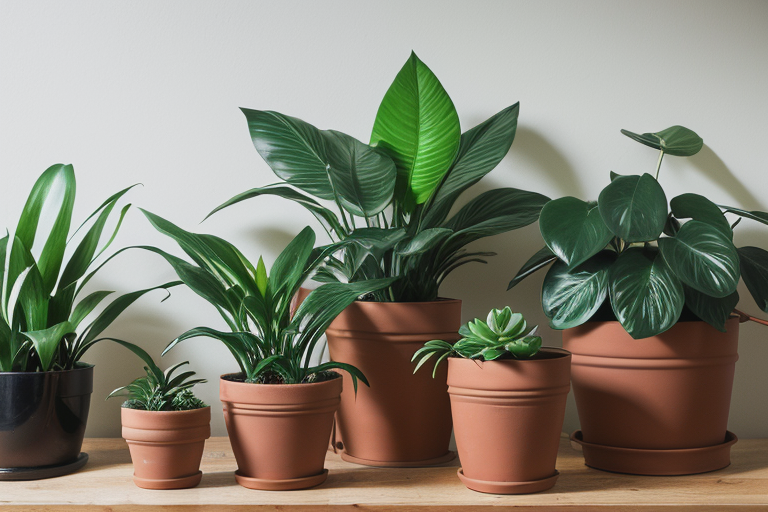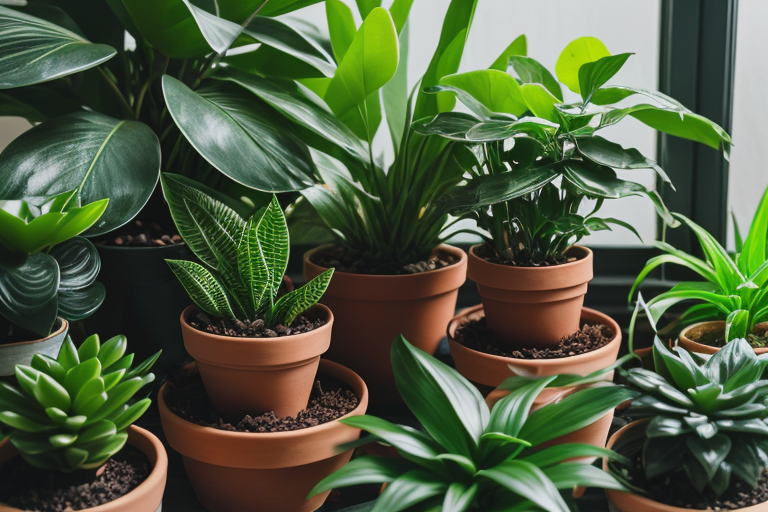Master the art of repotting with our comprehensive guide. Learn when to repot, step-by-step techniques, and choosing the right soil for healthy plants.

When to Repot Your Plants
Signs Your Plant Needs Repotting
- Roots growing through drainage holes
- Water runs straight through without being absorbed
- Plant has become top-heavy and tips over easily
- Soil dries out much faster than usual
- Growth has slowed significantly despite proper care
- Roots are circling the pot (visible when you lift the plant)
- Salt buildup appears white and crusty on soil surface
Best Timing
Spring and early summer are ideal for repotting, as plants are entering their active growing season. This gives them time to establish in their new container before winter dormancy. Avoid repotting during winter or when plants are stressed, flowering, or recently moved.
Frequency: Most houseplants need repotting every 1-3 years. Fast-growing plants like pothos may need annual repotting, while slow growers like snake plants can go 3-5 years.

How to Repot: Step-by-Step Guide
Materials Needed
- New pot (1-2 inches larger in diameter)
- Fresh potting mix appropriate for your plant
- Clean pruning shears or scissors
- Newspaper or tarp to protect work surface
- Watering can or spray bottle
- Gloves (optional but recommended)

Repotting Steps
- Prepare your workspace: Lay down newspaper or work outdoors to contain mess
- Water lightly: Water 1-2 days before repotting - slightly moist soil is easier to work with than bone dry
- Remove the plant: Gently tip the pot and slide the plant out. If stuck, tap the pot sides or squeeze plastic pots
- Inspect and clean roots: Gently tease apart circling roots and trim any black, mushy, or dead roots with clean shears
- Prepare the new pot: Ensure drainage holes exist. Add a thin layer of fresh potting mix to the bottom
- Position the plant: Center it at the same depth as before - the soil line should be about 1 inch below the pot rim
- Fill with soil: Add mix around the sides, gently firming as you go. Don't pack too tightly
- Water thoroughly: Water until it drains from the bottom holes, then allow excess to drain
- Place in bright, indirect light: Avoid direct sun for 1-2 weeks while the plant recovers
Choosing the Right Potting Soil
Key Factors to Consider
Texture & Structure
A good potting mix should feel light, crumbly, and not compact easily. Texture is a blend of particle size (coarse, medium, fine) and organic content. Avoid heavy garden soil which compacts in containers.
Drainage vs. Water Retention
Balance is crucial. Succulents need excellent drainage with lots of perlite or sand, whereas tropical houseplants appreciate a moist but aerated medium that holds some water while still draining well.
pH Level
Most indoor plants thrive in slightly acidic to neutral pH (6.0-7.0). Acid-loving plants like azaleas, blueberries, and gardenias prefer more acidic conditions (5.0-6.0).
Nutrient Content
Premixed soils often contain slow-release fertilizer. For heavy feeders like tomatoes and peppers, look for higher NPK numbers or plan to supplement with regular feeding.
Sterility
Commercial mixes are usually sterilized, reducing the risk of pests and diseases. Homemade mixes should be sterilized by baking at 180°F for 30 minutes to kill pathogens.
Soil Mixes by Plant Type
Succulents & Cacti
These plants love a gritty, fast-draining mix:
- 30% coarse sand or horticultural grit
- 30% pumice or perlite
- 40% potting soil (preferably peat-free)
Foliage Houseplants (pothos, monsteras, philodendrons)
They prefer a balanced, moisture-retentive but well-draining medium:
- 40% peat moss or coco coir
- 30% perlite or vermiculite
- 30% composted bark or leaf mold
Orchids (epiphytic types)
They need an airy, bark-based medium that mimics their natural tree-trunk habitat:
- 70% orchid bark chips (medium grade)
- 15% perlite
- 15% charcoal or sphagnum moss for moisture retention
Vegetables & Herbs
Heavy feeders that demand a nutrient-rich, well-draining blend:
- 40% high-quality potting soil
- 30% compost or well-rotted manure
- 20% coconut coir or peat
- 10% perlite or vermiculite
Ferns & Tropical Shade Lovers
These thrive in a moist, slightly acidic, organic-rich medium:
- 50% peat moss or coco coir
- 30% composted leaf mold
- 20% perlite or fine pine bark
DIY Soil Mix Recipes
All-Purpose Indoor Mix
Perfect for most houseplants:
- 1 part peat moss or coco coir
- 1 part perlite or vermiculite
- 1 part composted bark or leaf mold
Fast-Drain Mix for Cacti & Succulents
- 1 part potting soil (no added fertilizer)
- 1 part coarse sand or fine gravel
- 1 part perlite
Orchid Bark Mix
- 3 parts medium orchid bark
- 1 part perlite
- 1 part charcoal chunks (optional)
High-Nutrient Mix for Vegetables
- 2 parts high-quality potting soil
- 1 part coconut coir
- 1 part compost
- ½ part perlite
- ½ part worm castings (optional boost)
Important: Remember to sterilize any homemade mix before use. Spread on a baking sheet and bake at 180°F (82°C) for 30 minutes to kill pathogens and pest eggs.
Buying the Right Soil
What to Look For
- Read labels for terms like "well-draining," "peat-free," "pH-balanced," or "contains slow-release fertilizer"
- Check ingredient lists - avoid mixes heavy in "topsoil" or "clay" for containers as they compact quickly
- Choose reputable brands from established garden centers for consistent quality
- Buy appropriate quantities - small bags stay fresh, large bags are economical for multiple plants
- Look for organic certification if avoiding synthetic fertilizers
Quick Soil Quality Test
Before using any mix, perform this simple test:
Take a handful of slightly moistened soil and squeeze it. It should form a loose ball that crumbles easily when poked. If it forms a tight ball, it's too clay-heavy. If it won't hold together at all, it may be too sandy.
Advanced tip: Keep a basic soil testing kit (pH and EC meter) on hand. These inexpensive tools help you monitor and adjust soil conditions over time for optimal plant health.
Common Repotting Mistakes to Avoid
- Choosing too large a pot: Go only 1-2 inches larger in diameter to prevent overwatering issues
- Repotting at the wrong time: Avoid winter, flowering periods, or when plants are stressed
- Using the wrong soil type: Match the soil to your specific plant's needs
- Burying the stem too deep: Keep the soil line at the same level as before
- Compacting the soil: Firm gently - roots need air pockets
- Overwatering after repotting: Water thoroughly once, then wait until soil begins to dry
- Placing in bright sun immediately: Give plants 1-2 weeks in bright, indirect light to recover
Frequently Asked Questions
How often should I repot my plants?
Most houseplants need repotting every 1-3 years. Fast growers like pothos, spider plants, and fiddle leaf figs may need annual repotting, while slow growers like snake plants, ZZ plants, and cacti can go 3-5 years between repottings.
Can I reuse old potting soil?
You can refresh old soil by mixing it 50/50 with new potting mix and adding fresh perlite for drainage. However, completely replace soil if you notice pests, mold, or if the plant had disease issues.
What size pot should I choose?
Go only 1-2 inches larger in diameter than the current pot. Larger pots hold too much moisture and can lead to root rot. For very small plants, even ½ inch larger may be appropriate.
My plant is drooping after repotting - is this normal?
Yes, some transplant shock is normal. Keep the plant in bright, indirect light and maintain consistent moisture (but not wet) for 1-2 weeks. Most plants recover quickly with proper care.
